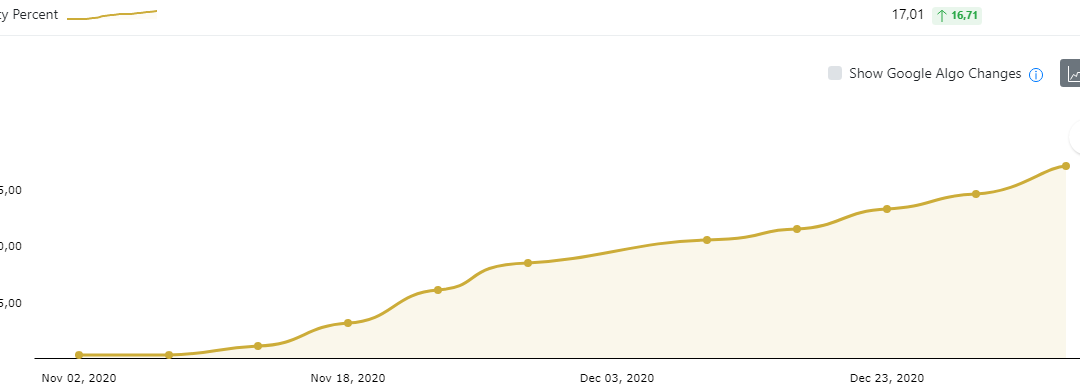Table of Contents
It’s no secret that we’ve run successful websites online for more than ten years now. We own businesses (run completely online) and have worked with clients all over the world.
From one business, we’ve built four others which are directly connected to the construction industry.
The construction industry has been left behind by tech. It’s an area we’re passionate about. We have countless ideas on how to automate our way through success. We’ve achieved part of what we’re after. We’re now starting a new endeavour in the eCommerce space to help reduce touchpoints for a person looking to buy parts.
I want to share what has worked and what we’re learning as we go through the process of trying to dominate and disrupt a monopoly.
Why eCommerce
We’ve chosen eCommerce because we can scale exactly what we want to do across North America (to start) and the world.
Our team has also tested hundreds of SEO experiments to understand what works and what doesn’t. Our team is ready to move on to a new system and increase revenue with a larger demographic.
Our goal is to completely automate the parts industry to the point where the middlemen and phone calls for simple questions get completely pushed aside.
We want consumers to be able to know where a part is, how many are available and how fast can they get it shipped.
Our master plan
I am not going to leave you in the dark. Here’s what we’re working on in detail:
- We want a central database of parts across North America. This database will show where a part is located, how many are left and what it will cost to ship.
- We will add large machines to the cloud with a device we’ve built for our own purposes. This device will be able to track the hours, the ability to turn the machine on or off and give details on what part was changed.
- We’re going to give the ability to compare pricing directly on product pages. This is done with scraping tools we’ve built in-house.
- Our database will connect compatible parts since most tool/machine owners usually need to change multiple parts on a regular basis.
The goal
Our goal isn’t to rely on an eCommerce website for revenue. Our goal is to collect data on the machines being used to have predictive abilities in the future.
For example, if a filter needs to change on a truck and we have 1000 of the same model in our database we will easily predict if that particular machine has filter issues because the owners keep changing this particular part more often than the recommended timeframe.
The revenue from the eCommerce component will fund the data collection and subsidize our master plan to automate and have predictive analytics to finally propel our industry into the future.
We have a larger plan than this website and our SaaS system. The details of our master plan will have to wait until we’re ready to present it to the public.
What we’ve done so far
For the past six months, the marketing team has been busy. We’ve launched our website, built the framework for our database, connected a new 3PL system and successfully sourced 3000 popular parts.
Our rankings have grown significantly since we started tracking it early in November 2020.

This score is based on all of our keywords being tracked nationally in the US. Specifically, we’re tracking states like California, Texas, Illinois, Florida and other jurisdictions with a high population number.
At this rate, we should be hitting the 40% visibility mark by the end of 2021. My hope is that we will be on the first page of Google for most of our primary keywords.
Because we’re new to the industry and trust is an issue, what we’ve done to resolve this issue is to create two YouTube channels with 40+ helpful videos for common questions. We now have 1400 subscribers and the list is growing.
We strongly believe that a media presence will build trust and when we’re ready to go live with the SaaS part of our website, we’ll have a lot more traction than starting from zero.
Finally, we’re building a network of technicians across the country. We’re going to offer them a way to:
- Attract more business with leads through our technician website
- Ability to manage what they offer on our platform
- Access to our parts database
You’re probably beginning to see the bigger picture here.
What we’re planning will take months and months to perfect and learn from. I am sure we’ll change multiple times as we learn from our mistakes.
Issues we’re facing now
A major issue we’re experiencing is not the technology we’ve built but the partners we’re dealing with.
Here’s how we’ve built the MVP:
- When an order is received, I immediately reach out to our partners to see if they have the part in their warehouse. This is manual because the industry has not automated inventory yet.
- If the product is available, I have to send the order information. If the product is not available, I have to refund the customer. This process is chaotic and frankly embarrassing.
- I have to keep checking if the order has been shipped. I never get an email with the tracking info. It’s a giant issue for us right now.
- Many times, I’ve been told the part exists and when the order goes through, the product is suddenly “not available”
I’ve also been getting a lot of pushback from the sales staff of our partners. I understand their threatened and for good reason. We will eventually make them obsolete. I don’t know how to beat around the bush but it’s the truth and it’s coming.
Final thoughts
I can’t give you too much of what we’ve done since we’re still working on developing our system.
I will eventually get into the details of what we’re doing to improve our rankings, grow revenue, improve the buying process/journey, introduce predictive analytics and finally automate wherever we can.
In my next post, I am going to go over a few tactics, which are working in terms of SEO.
I’ll include information on how we optimize our category/product pages, homepage, content generation, and link building. I think I can fit everything in one post. I promise you’ll like what I’ll have to share.
This was short and sweet. Until next time, I’ll catch you on the next post.


